Top image: Crew of M-3 Tank #309576, 2nd Battalion, 12th Armored Regiment, 1st Armored Division, in Tunisia, 1942. Courtesy US Army Center of Military History. https://history.army.mil/photos/WWII/ErlyYrs/WW2-ErlYrs.htm
At the Arcadia Conference, held in Washington, DC, from December 24, 1941 to January 14, 1942, the Western Allies agreed to a “Germany First” policy to govern global strategy, but the question where to engage Germany, and when, remained unsettled. Chief of Staff General George C. Marshall strongly backed Operation Sledgehammer, a plan to invade Western Europe in 1942. Prime Minister Churchill and the British Chiefs of Staff counseled against this plan, arguing that the Allies were unprepared for such a complex operation and should not risk it so soon. They backed Operation Torch instead, an amphibious invasion of French North Africa.
While the debate continued beyond the Arcadia Conference, the outcome was predictable. The United States did not yet have the military strength to invade France alone, and the British simply would not agree to take part in such an endeavor in 1942. Still, after nearly a year at war, US ground forces had not yet engaged the Germans in combat. This posed a dilemma for US President Franklin Delano Roosevelt.
Roosevelt believed in the Germany first strategy, but he could hardly deny his admirals in the Pacific the forces they sorely needed while leaving American divisions in England with no mission. Further, the American public needed to see some positive developments in the war effort. The naval victory at Midway only partially offset the loss of the Philippines and the uncertain situation in Guadalcanal and New Guinea. Further, the combined bomber offensive had only just gotten underway. With these considerations in mind, Roosevelt sided with Churchill, committing the United States to Operation Torch and, ultimately, a series of campaigns in the Mediterranean that came to be known as the “Underbelly Strategy.”
Operation Torch began on November 8, 1942. Lieutenant General Dwight D. Eisenhower commanded the Allied invasion force, consisting of more than 80,000 American and 20,000 British troops, organized into three task forces that landed near Casablanca in French Morocco, and the Algerian cities Oran and Algiers. After seizing the key ports, roads, and airfields in the face of token French resistance, the Allies turned their attention to the east. Mechanized forces raced towards Tunisia on November 23 in hopes of seizing the key port city of Tunis, but the Germans had already formed a powerful defense.
Given the situation, Eisenhower developed a new plan. He reoriented his forces to the southeast where, after tactical setbacks and severe weather frustrated their attempts at offensive operations in December, they went over to the defense in central Tunisia in January 1943. Lieutenant General Kenneth Anderson’s British First Army occupied positions in the north, General Louis-Marie Koeltz’s XIX Corps, consisting of two newly formed Free French divisions, held in the center, and Major General Lloyd Fredendall’s US II Corps defended in the south.
This set the stage for the German offensive known as the Battle of Kasserine Pass, which Field Marshal Erwin Rommel launched on February 14, 1943. Historians usually describe Kasserine as a major defeat of the inexperienced US ground forces in their first serious engagement with the Germans. While there is some truth to this, the story of the battle’s first days, which saw US forces retreat as much as 50 miles, has overshadowed that of its eventual outcome.
When Rommel launched his final attack towards Tébessa, his ultimate objective, on February 22, he crashed headlong into a powerful American combined arms defense. This forced him to retreat, ending the operation in what was, by any reasonable definition, a hard-fought victory for the US II Corps. Although usually referred to as a battle, Rommel’s offensive at Kasserine Pass was an operation—a series of interrelated tactical engagements taking place over days, weeks, or longer.
In this case, Rommel’s plan for the “Gafsa operation” involved a coordinated attack against the British First Army to isolate and destroy the US II Corps while advancing west as far as Tébessa in the American rear area.[1] The 10th and 21st Panzer Divisions of General Hans-Jurgen von Arnim’s Fifth Panzer Army would strike at the Eastern Dorsal north of the recently captured Faïd, pushing through Sidi Bou Zid towards Sbeïtla to isolate the US II Corps to the south. Meanwhile, the German Afrika Corps (DAK) would attack west through Gafsa and then turn to strike at II Corps from the south.
When he attacked on February 14, Rommel found his adversaries unprepared. Fredendall had deployed his corps in penny packets across the complex terrain, in some cases too far from one another to provide mutual fire support. As the panzers swept through Faïd Pass at Sidi Bou Zid, the 2,000 officers and men of the 34th Infantry Division’s 168th Infantry Regiment soon found themselves surrounded on high ground. Attempts to relieve the regiment failed; ultimately, only 300 managed to evade capture under cover of darkness. German dive-bombers attacked concentrations of US combat forces as the tank battle grew more violent by the hour. The German attack to the south worsened the situation, forcing the evacuation of Gafsa as columns of panzers advanced toward Sidi Bou Zid from the southwest, threatening to surround American forces there.
Counterattacks by the 1st Armored Division’s Combat Command A (CCA) on the 15th and 16th achieved little, and the resulting casualties led the CCA commander to order a retreat to Sbeïtla that quickly turned into a rout. By the night of the 16th, II Corps had lost 1,600 men, nearly 100 tanks, 57 half-tracks, and 29 artillery pieces.[1] Further counterattacks were out of the question. 1st Armored Division withdrew to positions southeast of Tébessa as the enemy infiltrated the approaches to Kasserine Pass.
On the 17th of February, Rommel assessed that he had achieved all his objectives for the first phase of the operation and saw an opportunity to expand its ultimate aim. As the Americans concentrated in a defensive position east of Tébessa, Rommel gained Field Marshal Albert Kesselring’s approval to resume the attack on the 19th, with all mobile elements of the 10th and 21st Panzer Divisions under his command. His orders were to strike northwest to Le Kef, either through Kasserine Pass or Sbiba, to isolate the British 5 Corps, destroy the US II Corps, and drive the British First Army out of Tunisia.
The Allies had not been idle. The restrictive terrain forced an attacker into the passes, where defending troops could block roads and fire on convoys from positions on high ground. American, British, and French troops had assembled a sizable force at both Sbiba and Kasserine Pass, where they laid mines, dug in, and awaited the attack. A small, improvised force of Americans fought Rommel to a stalemate in Kasserine Pass on the 19th, frustrating his plans to control the pass by the end of the day. Meanwhile, the 21st Panzer Division’s attack towards Sbiba stalled in a dense Allied minefield within range of a British artillery brigade. Attempts to outflank the position failed, allowing the Allies to strengthen it during the night. The successful defense in both locations forced Rommel on the night of the 19th to reevaluate his plan. He decided that his prospect of success was better at Kasserine Pass and focused his efforts there the next day.
February 20 saw another day of intense combat east of Tebessa, with the Germans finally clearing Kasserine Pass and gaining control of its northwestern exits by the end of the day. This time, however, the battle did not end in a rout. On the contrary, the tenacious Allied defense of the pass on the 19th and 20th gave the Allies time to bolster their position. Brigadier General Paul Robinett’s Combat Command B (CCB) of 1st Armored Division joined forces on February 20 with elements of Major General Terry de la Mesa Allen’s 1st Infantry Division. They formed a powerful defense on the southern and western edges of the Bahiret Foussana valley with a combined arms team of infantry, tanks in defilade, and antitank guns in mutually supporting positions. Dozens of artillery pieces provided direct support, guided by forward observers in well-concealed observations points who preregistered fires along likely avenues of approach. Meanwhile, the British 26th Armored Brigade established a defensive line nine miles north of the American position, blocking the road to Thala. With the position south of Sbiba holding firm, Rommel would commit his main effort the next morning to the north and west, through Kasserine Pass.
When the attack came on the morning of February 21, the Allies were ready. Panzer Grenadier Regiment Africa led the attack, driving back Robinette’s forward elements and securing hill 812, only to find itself trapped there. Unable to penetrate the main defensive line or to retreat through the hail of artillery in the open ground to their rear, the grenadiers went to ground. A supporting attack by the 1st Battalion, 8th Panzer Regiment and the assault guns of Division Centauro ground to a halt in the face of the American antitank defenses and devastating artillery fire. To the north, the British force south of Thala bent, but did not break. After holding up Kampfgruppe, 10th Panzer Division about nine miles south of Thala late in the afternoon, a desperate melee ensued. Confusion mounted as the Germans penetrated British lines, but after three hours the Germans withdrew. The timely arrival of US 9th Infantry Division’s artillery strengthened the position sufficiently to enable it to hold on the 22nd. Rommel ordered his forces to pass over to the defensive.
Reassessing the situation, Rommel realized further attacks were unlikely to succeed. Contrary to some accounts, he did not abandon the offensive because he lacked fuel. On the 22nd, Rommel had enough fuel to advance another 250-300 kilometers, plus four days of rations, but he was somewhat low on ammunition. Another 150-200 kilometers’ fuel, a day’s supply of ammunition, and more than six days’ rations were available in reserve stocks.[1] Rather, Rommel’s limited gains over the previous week of fighting could not justify his losses. Further, aerial reconnaissance had revealed the approach of sizeable Allied reinforcements from the west. Convinced that his hopes of penetrating the Allied lines and forcing them out of Tunisia were dashed, Rommel retreated, leaving minefields in his wake as he turned his attention south to the Mareth Line and the British Eighth Army.
Reports of losses vary, but the official history records the following. The Germans claimed a total of 3,721 Allied prisoners taken, and they claimed to have destroyed 235 tanks, 110 self-propelled guns and reconnaissance vehicles, 67 antitank guns, 95 personnel carriers, 13 guns, and 14 aircraft. These numbers are consistent with US Army reports, although they do not account for all American casualties. As Fredendall reported, II Corps alone lost 183 tanks in the battle. German reports indicated less significant losses: 201 killed, 536 wounded, and 252 missing, plus 20 tanks, 6 armored vehicles, 61 motor vehicles, and a variety of crew-served weapons destroyed.[1]
Still, these casualties and losses do not equate to German victory. Rather, they illustrate how costly the early stage of battle was for the Americans, and how hard-won their ultimate victory. As the US Army’s official historian argued: “The Axis forces had pursued two objectives. They sought to reduce Allied capabilities of attack by the destruction of men and matériel, and to bring about a westward withdrawal of the British First Army in the north. The Allied defense had frustrated the second of these intentions, and Allied forces eventually returned to the very ground from which they had been driven, with their capabilities for attack not significantly impaired.”[2]
Still, the American victory was overshadowed by concerns over their inferior performance at the beginning of Rommel’s offensive. Recriminations came quickly, including the relief of Fredendall, replaced by Major General George Patton. The American press told the story of a disastrous defeat, and the commander of the Army Ground Forces, Lieutenant General Lesley J. McNair, began a deliberate effort to assess the lessons to be learned and adjust stateside training of combat forces accordingly. Even Eisenhower downplayed the Allied victory, writing in his final report on operations in Tunisia, “By February 22nd, the enemy offensive, having reached its flood tide without having breached the barriers which protected our lines of communication to the North via TEBESSA and THALA – LE KEF, began steadily to ebb.”[3]
Ironically, in the same report Eisenhower assessed that after Kasserine, the enemy’s “sands were running out, and the turn of the tide at Kasserine proved actually to be the turn of the tide in all of Tunisia as well.”[1] The US Army’s official history notes that, “The enemy broke through Kasserine pass against a defense which seemed haphazard; but he failed in the attempt to exploit the break-through because these defenses actually turned out to be formidable in character.”[2]
Even Rommel’s assessment was more positive than that of the Americans or their British allies. Rommel wrote after the battle, “The tactical conduct of the enemy’s defense had been first class. They had recovered very quickly after the first shock and had soon succeeded in damming up our advance by grouping their reserves to defend the passes and other suitable points.[3] Still, as historians wrote the history of the war, the battles at Kasserine Pass emerged as a story of defeat in a first battle against a powerful enemy, revealing significant weaknesses in American leadership, training, and equipment.
One exception is Gerhard Weinberg, author of A World At Arms, who wrote a very different assessment than one usually finds in histories of the campaign:
The American tactical defeat at Kasserine Pass and its two thousand casualties had three repercussions, one immediate, the other two more lasting. The immediate effect was a series of personnel changes. […] The two more lasting effects were on the Americans and British thereafter. The American Army learned a great many useful tactical lessons, some applied in battle thereafter and more incorporated into the training of new divisions in the United States and the specifications for American equipment.
As Weinberg argued, senior British officers’ assessment was quite different:
The higher commanders of the British Army drew an entirely different and fatefully flawed lesson from this event. Both General Montgomery and Field Marshal Alexander…concluded that the Americans were hopelessly trained and led, made poor soldiers, and were unlikely to improve quickly in either performance or leadership. It is difficult to understand why they found it so hard to comprehend that the Americans’ taking several months to learn what it had taken [the British] army and its leaders three years was a good, not a bad, sign for the Allied cause.[1]
As Weinberg noted, the American defeat at Kasserine Pass was a tactical one. This does not change the fact that they also won a hard-fought operational victory; one that preserved the Allied position in Tunisia and turned the tide of the North African campaign against the Germans. The lessons learned were invaluable, but they came at the cost of damage to American prestige in the short term and the impact on the historical narrative of the campaign over the long term.
The German offensive at Kasserine Pass should be remembered for what it was—a significant victory against one of Germany’s most skilled combat commanders, won on the heels of painful early setbacks through the initiative of individual officers and men who refused to give in.
Mark T. Calhoun, PhD
Mark T. Calhoun, PhD, is a former Senior Historian at the Jenny Craig Institute for the Study of War and Democracy.
Cite this article:
MLA Citation:
APA Citation:
Chicago Style Citation:
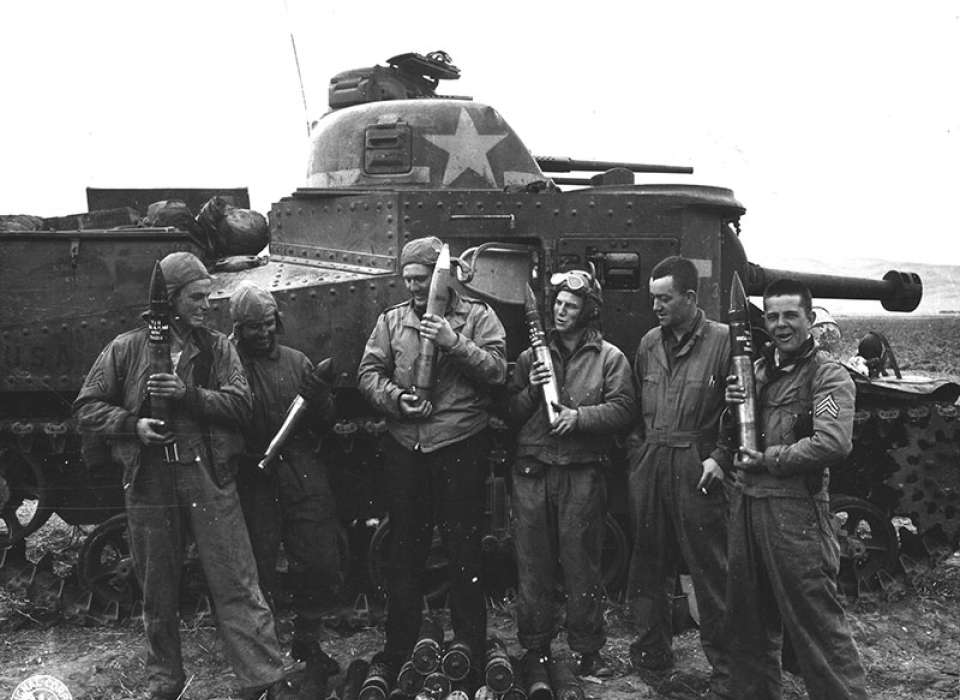
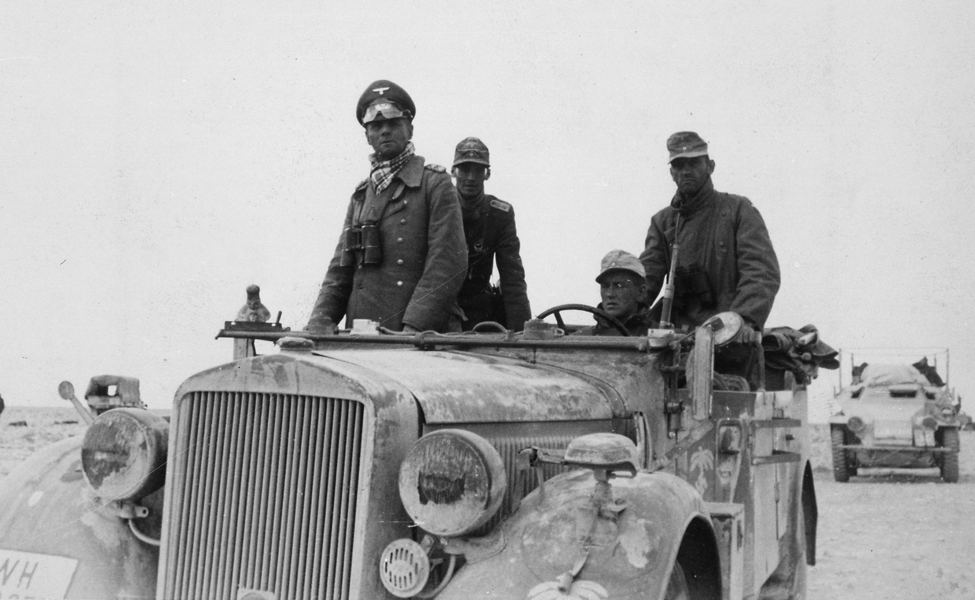
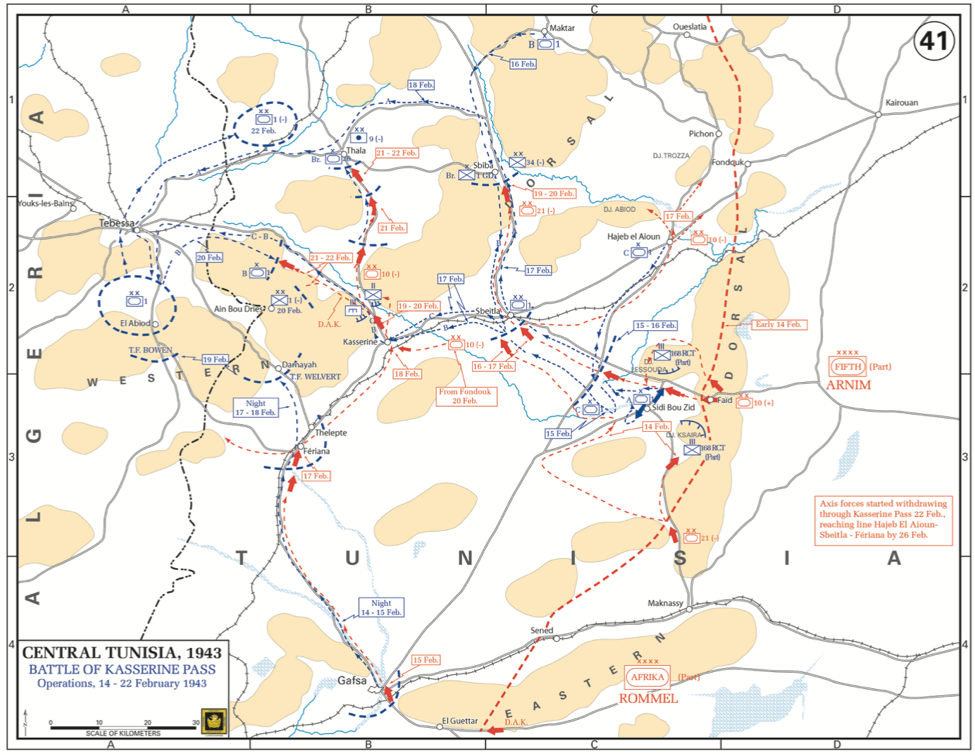
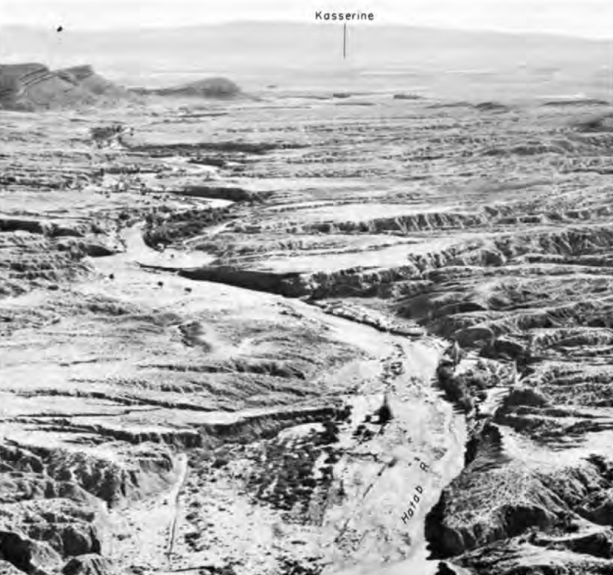
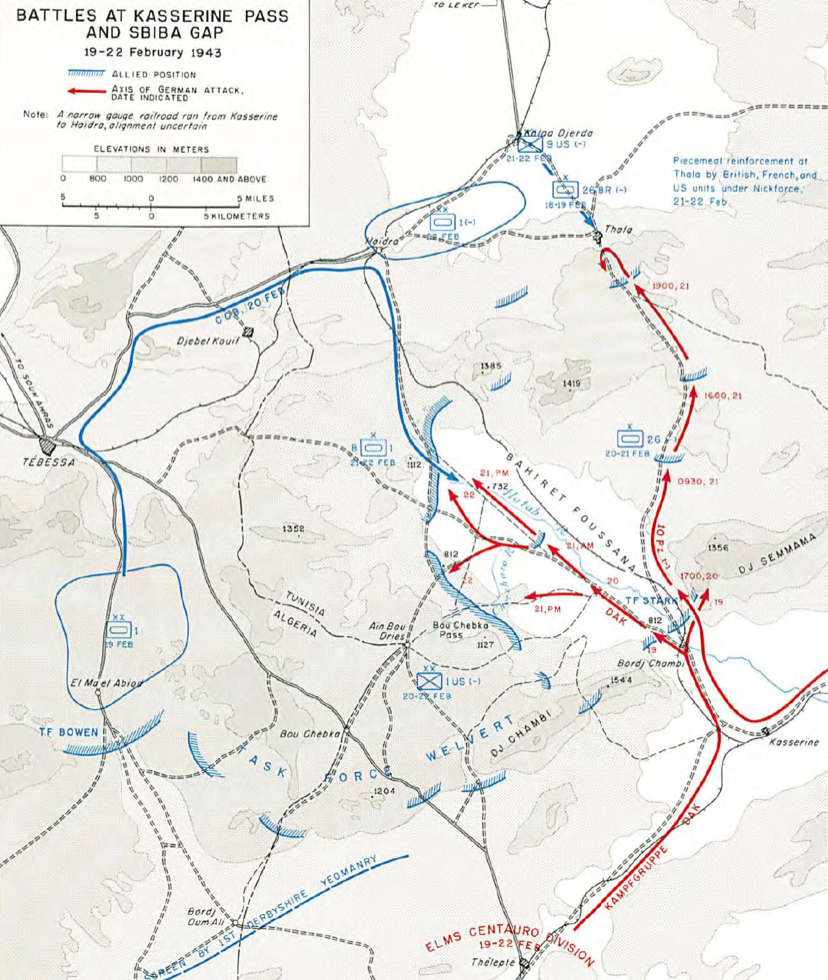
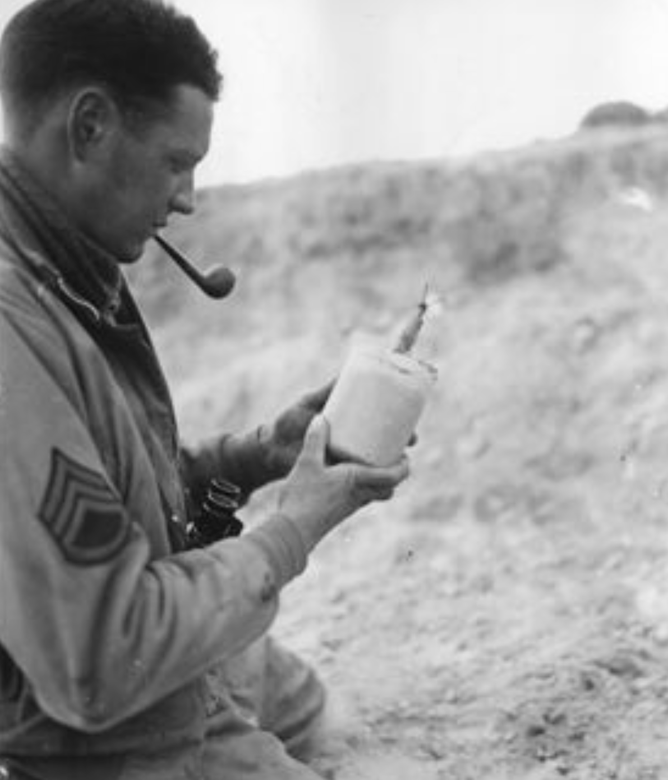




![Max Fuchs, New York City cantor, sings as Rabbi Sydney [sic] Lefkowitz, Richmond, VA, conducts the first Jewish services from Germany.](/sites/default/files/styles/max_650x650/public/2025-10/image1.jpg)



